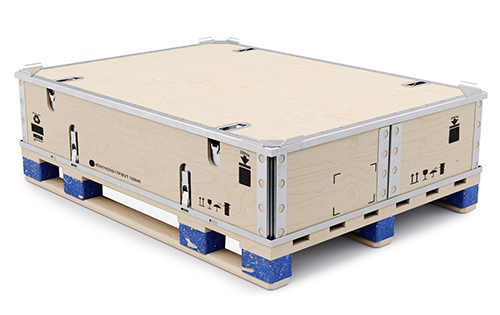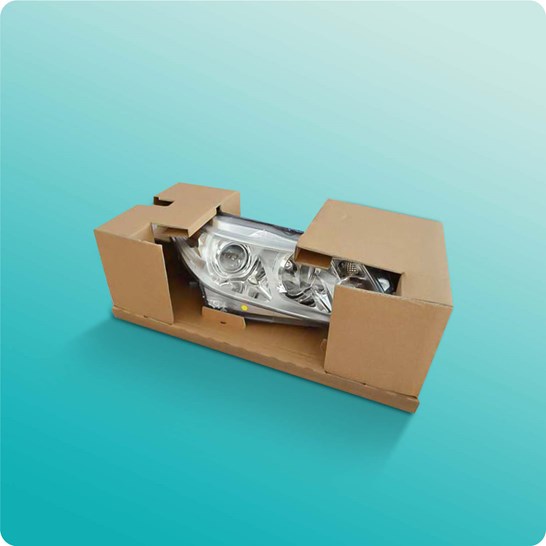Metallic Might: Industrial Metal Packaging Solutions Redefined
Metallic Might: Industrial Metal Packaging Solutions Redefined
Blog Article
Discover the Importance of Industrial Packaging Recycling: Expert Insights
It is essential to understand the relevance of reusing industrial product packaging to alleviate the negative effects on our world. In this discussion, we will certainly dig into the specialist insights on this subject, checking out the benefits of reusing industrial product packaging, professional tips for efficient recycling, the challenges entailed, and the future potential customers and innovations in this area.
Environmental Influence of Industrial Packaging

An additional ecological impact of industrial packaging is the deficiency of natural deposits. The production of product packaging products requires significant amounts of energy, water, and resources. This removal and intake of sources add to deforestation, water scarcity, and the damage of ecological communities. In addition, the manufacturing process of product packaging materials commonly entails making use of toxic chemicals that can contaminate soil, air, and water, posing a risk to human health and wellness and the atmosphere.
Recycling programs should be applied to make sure that industrial product packaging materials are drawn away from garbage dumps and given a 2nd life. By dealing with the ecological effect of commercial packaging, we can relocate towards a more liable and sustainable approach to product packaging and contribute to the preservation of our planet for future generations.
Benefits of Recycling Industrial Product Packaging
Recycling commercial packaging supplies various benefits, both for the atmosphere and for businesses looking for to adopt sustainable techniques. One of the vital advantages of recycling is the decrease in waste sent to land fills. By recycling packaging products such as cardboard, plastics, and metals, business can minimize their ecological footprint and save valuable resources.
Reusing commercial product packaging also helps to conserve energy. Additionally, recycling minimizes greenhouse gas exhausts linked with the manufacturing of brand-new product packaging materials.
One more advantage of recycling industrial packaging is the potential for cost savings. By implementing reusing programs, organizations can lower garbage disposal prices and possibly produce income by offering recyclable materials. Reusing can additionally boost a business's public picture and attract environmentally aware consumers that value sustainable practices.
Furthermore, reusing commercial packaging can contribute to a round economic situation. By reusing materials and incorporating them back into the manufacturing process, companies can create a closed-loop system that lowers the requirement for virgin materials and advertises source efficiency.
Specialist Tips for Effective Industrial Product Packaging Recycling
To enhance the efficiency of commercial product packaging recycling, expert expertise and approaches are necessary. Industrial packaging is designed to shield products throughout transport and storage, and reusing it can help in reducing waste and save resources. Right here are some expert pointers for efficient commercial packaging reusing:
Style for recyclability: When picking packaging products, consider their recyclability. Stay clear of using blended products or complex packaging layouts that are difficult to different and reuse.
Execute a recycling program: Create an extensive recycling program that consists of clear standards for getting rid of and arranging of product packaging materials. Inform workers concerning the importance of recycling and supply correct training on just how to recycle efficiently.
Partner with reusing centers: Team up with neighborhood recycling facilities to understand their acceptance requirements and demands. Develop a partnership with a reputable recycling partner who can handle your commercial product packaging waste successfully.
Lower product packaging waste: Discover means to decrease product packaging waste by using innovative design techniques, such as lightweight materials and right-sizing packaging. By decreasing the amount of packaging utilized, you can reduce the environmental impact and make recycling easier.
Track and measure reusing initiatives: Display and determine your recycling efforts to assess the effectiveness of your program. Establish objectives and targets for raising recycling prices and constantly improve your recycling strategies based upon the information gathered.
Difficulties in Industrial Packaging Recycling
Among the significant difficulties faced in industrial product packaging recycling is the absence of standardized reusing approaches and facilities. Unlike home recycling, where there are clear guidelines and systems in position, commercial packaging reusing commonly lacks a consistent approach. industrial metal packaging. This absence of standardization makes it challenging for businesses to browse the recycling procedure successfully and efficiently
Another obstacle is the complexity of commercial packaging products. Industrial packaging is usually made from a large range of products, such as plastics, metals, and composite products. Each material needs a official website different recycling procedure, which contributes to the intricacy and cost of recycling. Moreover, some industrial product packaging materials, such as laminated plastics, are not conveniently recyclable, leading to boosted waste and environmental influence.
In enhancement, the sheer volume of commercial product packaging waste can be overwhelming. Industries produce a substantial amount of packaging waste daily, and locating suitable recycling facilities to manage this quantity can be a difficult job. This can cause packaging materials being sent to garbage anonymous dump as opposed to being reused.
Additionally, the lack of understanding and education and learning concerning commercial product packaging recycling is another challenge. Numerous services are not completely familiar with the advantages of reusing their product packaging products or the readily available recycling alternatives. This absence of recognition leads to a missed opportunity to decrease waste and add to a more sustainable future.
To conquer these difficulties, it is important for services to interact with recycling organizations, government agencies, and sector organizations to create standard recycling techniques and facilities. This will not only streamline the reusing procedure however additionally make certain that even more product packaging materials are diverted from landfills and recycled effectively. In addition, elevating understanding and offering education about commercial product packaging recycling can assist businesses understand the relevance of reusing and make notified decisions about their product packaging selections.
Future Potential Customers and Innovations in Industrial Packaging Recycling
With the obstacles of standard methods and infrastructure in commercial packaging recycling, the focus currently shifts towards discovering future potential customers and innovative remedies to deal with these concerns. As the need for sustainable product packaging remains to expand, the market is witnessing improvements in technology and procedures that aim to boost recycling prices and reduce ecological impact.
One appealing future possibility is the advancement of smart packaging products. These products are designed to have installed sensing units that can give info about their composition and condition. By utilizing these sensors, recyclers can easily identify and sort various kinds of product packaging products, making the recycling procedure much more reliable and affordable.
One more innovative option is using advanced recycling modern technologies. Traditional recycling techniques usually face difficulties in properly reusing complex packaging materials, such as multi-layered plastics. Advanced innovations, such as chemical recycling and pyrolysis, can damage down these products right into their standard components, enabling a higher rate of recycling.

Verdict
By reusing industrial packaging, businesses can profit from expense savings, reduced waste, and boosted brand name picture. The future prospects of commercial product packaging recycling are promising, with advancements in modern technology and advancements aimed at boosting reusing efficiency and lowering waste.
Reusing programs ought to be applied to make certain that industrial packaging materials are diverted from land fills and provided a second life. By dealing with the environmental influence of industrial packaging, we can relocate towards an extra accountable and lasting method to product packaging and contribute to the conservation of our world for future generations.
Reduce packaging waste: Discover methods to decrease packaging waste by making use of innovative layout techniques, such as light-weight materials and right-sizing packaging. In addition, raising understanding and providing education concerning industrial packaging recycling can aid companies comprehend the importance of recycling and make educated choices about their product packaging selections.
Traditional recycling methods typically deal with difficulties in successfully reusing complicated packaging materials, such as multi-layered plastics.
Report this page